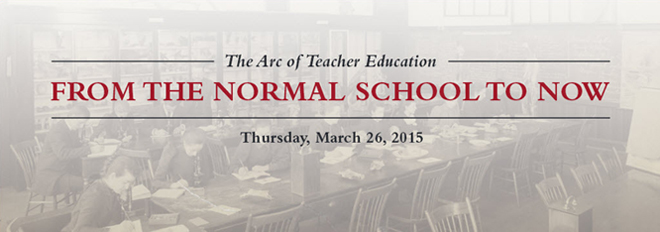Presentation Title
Teacher Training and the Teaching License in the Thirteenth-century University
Session Name
Concurrent Session 3. Turning Students into Teachers: Case Studies from the Early Years
Start Date
26-3-2015 2:00 PM
End Date
26-3-2015 3:30 PM
Abstract
The uniquely western and uniquely medieval institution of the university, as its name betrays, owes its origin to urban guild practices. While universities very early on were preparing their students for careers beyond their confines, the “degrees” that they conferred all reflected some level of entry into the community of teachers, or “the totality of masters and scholars (universitas magistrorum et scholarium).” This paper offers an extended look at the arc of teacher education back to its institutional origins in the European universities of the late twelfth and thirteenth centuries. What were the teaching methods and practices of the first universities? What preparation and procedures were in place for students to begin to teach, that is, to give lectures (lectiones) to others? How did the right to bestow the all-important teaching license (licentia docendi) expose tensions between the new universities and the ecclesiastical hierarchy? A survey of teaching practices and credentials of the medieval university can help place the modern incarnation of that institution into a much larger perspective.
In his reflections on the history of education, Horace Mann dismissed the middle ages as “a gloomy and terrible period.” He saw the drive for free public education and the ensuing normal school movement, rightly, as novel reactions to previous educational systems. My goal here is not to challenge that assertion, but rather to emphasize the differences (as well as some of the similarities) in teaching within the framework of an institution that has been evolving for eight centuries.
Teacher Training and the Teaching License in the Thirteenth-century University
The uniquely western and uniquely medieval institution of the university, as its name betrays, owes its origin to urban guild practices. While universities very early on were preparing their students for careers beyond their confines, the “degrees” that they conferred all reflected some level of entry into the community of teachers, or “the totality of masters and scholars (universitas magistrorum et scholarium).” This paper offers an extended look at the arc of teacher education back to its institutional origins in the European universities of the late twelfth and thirteenth centuries. What were the teaching methods and practices of the first universities? What preparation and procedures were in place for students to begin to teach, that is, to give lectures (lectiones) to others? How did the right to bestow the all-important teaching license (licentia docendi) expose tensions between the new universities and the ecclesiastical hierarchy? A survey of teaching practices and credentials of the medieval university can help place the modern incarnation of that institution into a much larger perspective.
In his reflections on the history of education, Horace Mann dismissed the middle ages as “a gloomy and terrible period.” He saw the drive for free public education and the ensuing normal school movement, rightly, as novel reactions to previous educational systems. My goal here is not to challenge that assertion, but rather to emphasize the differences (as well as some of the similarities) in teaching within the framework of an institution that has been evolving for eight centuries.
